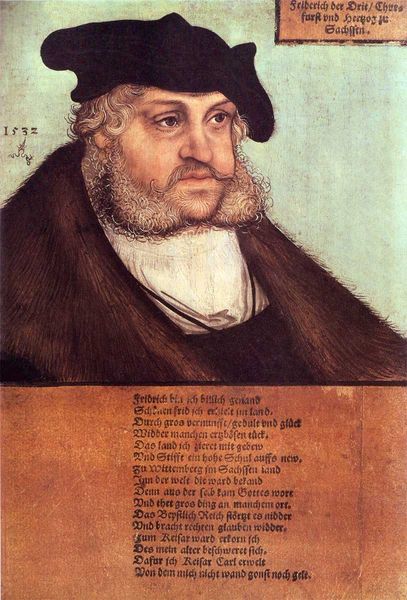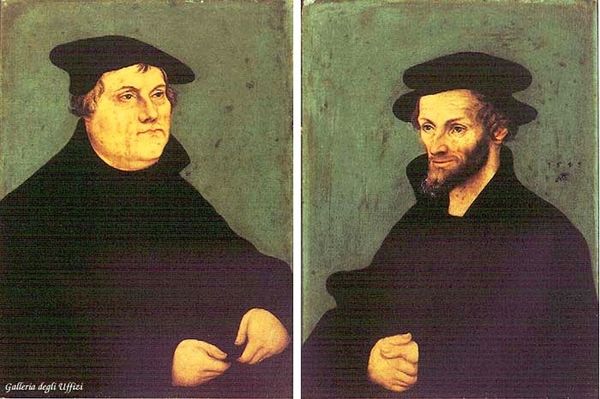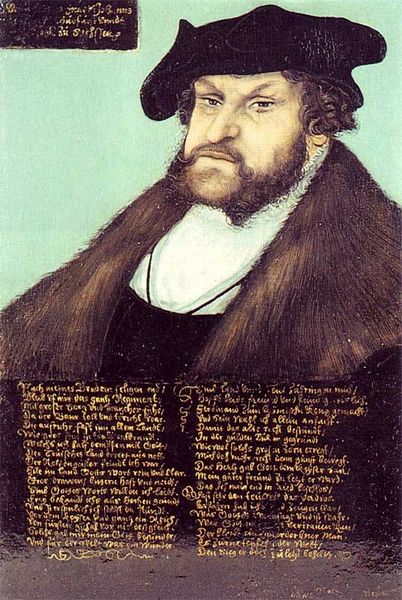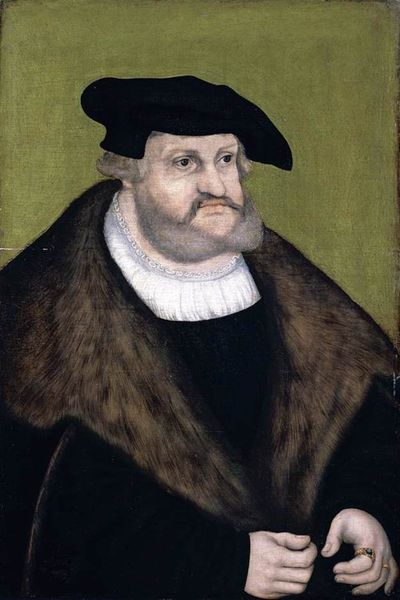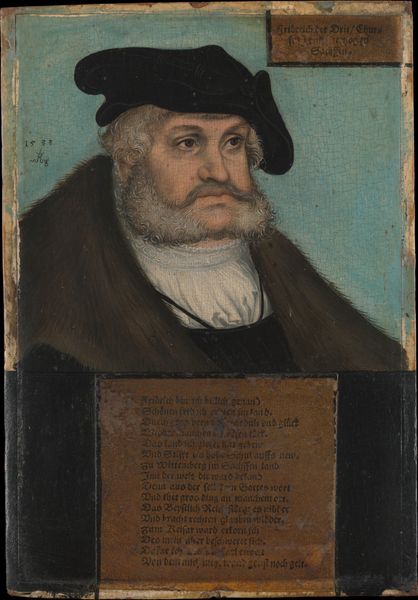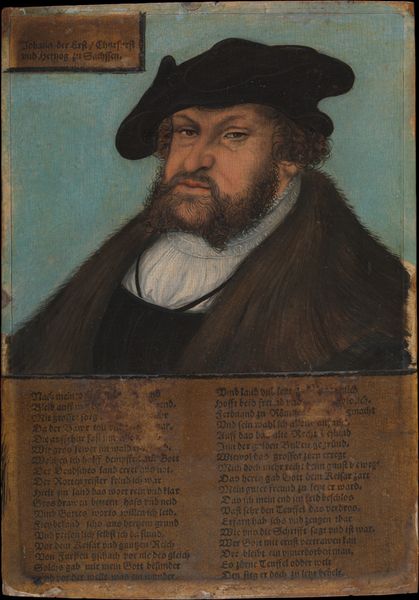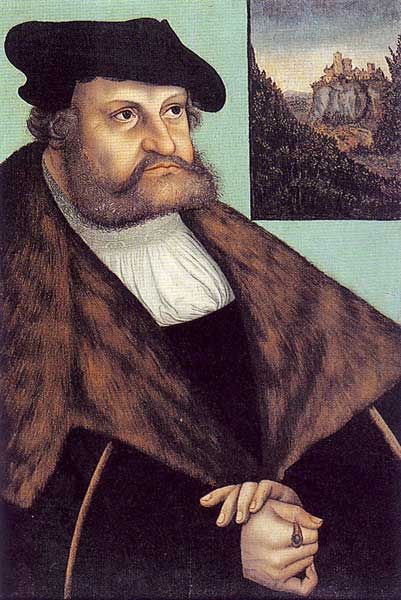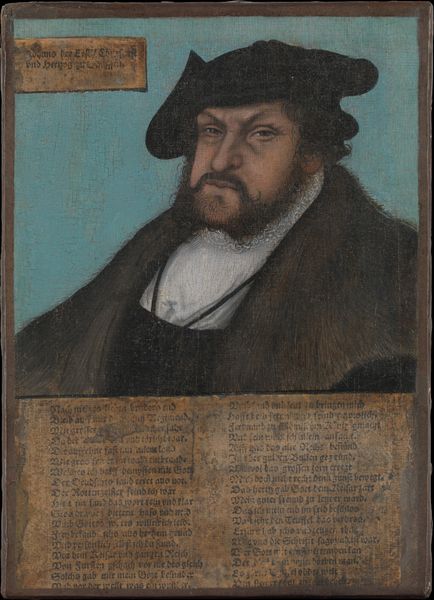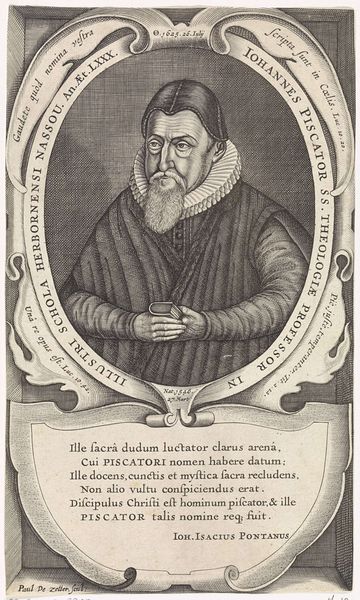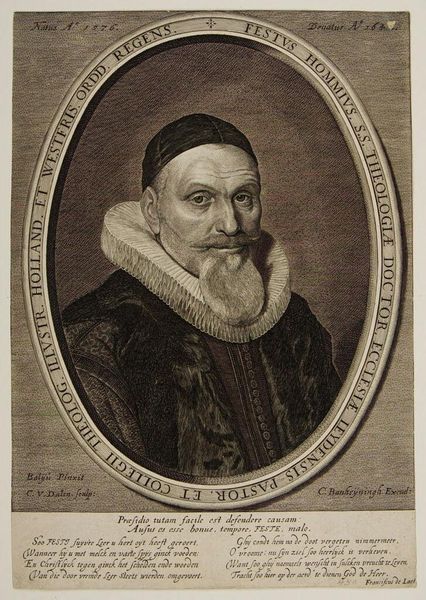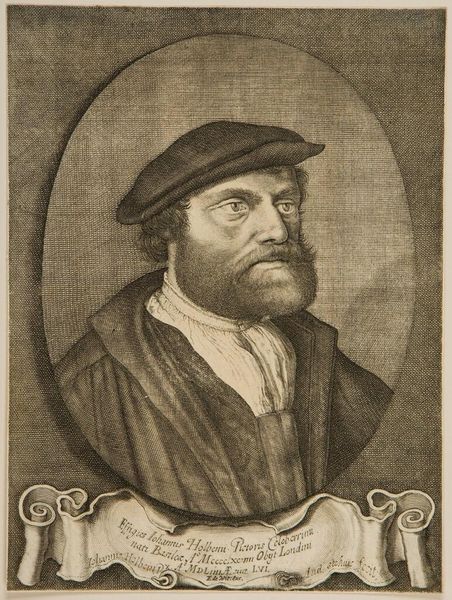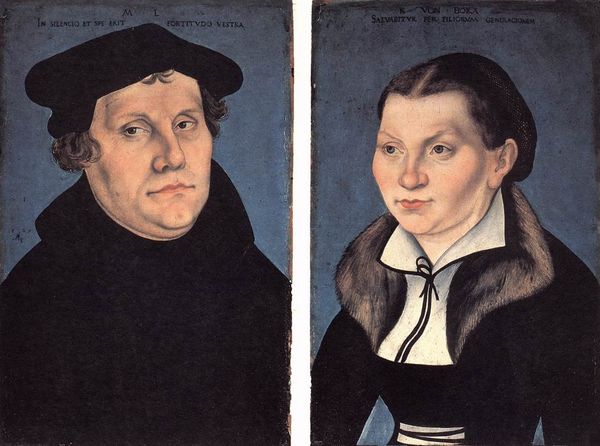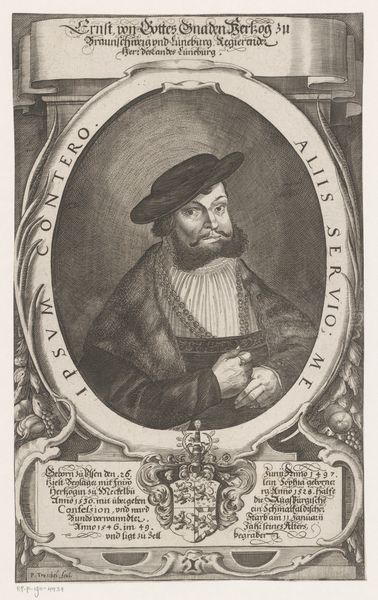
Portraits of Johann I and Frederick III the wise, Electors of Saxony 1533
0:00
0:00
Dimensions: 20 x 30 cm
Copyright: Public domain
Curator: We’re looking at a diptych, a pair of oil paintings now held at the Uffizi Gallery in Florence, "Portraits of Johann I and Frederick III the Wise, Electors of Saxony." Lucas Cranach the Elder completed them around 1533. Editor: Immediately, what strikes me is the rigidity. They’re framed almost like icons, stiff and frontal, with those dense blocks of text beneath. There’s a gravity, an almost intimidating formality to their presentation. Curator: Yes, the composition adheres to the Northern Renaissance style prevalent at the time, focusing on precise details and a somewhat flattened perspective. It lacks the atmospheric perspective found in Italian Renaissance works, instead prioritizing clear representation. The painting shows two very powerful men, both with solid shapes which mirror each other and project steadfastness. Editor: Right, and there’s this almost medieval feel too, like devotional images. These aren't simply portraits of powerful men; they're imbued with significance. The presence of German text beneath each portrait turns them into veritable monuments, their chins jutting out defiantly over an assertive propaganda campaign of words. They were staunch supporters of the Reformation, and you can tell the Reformation holds a large significance in their symbolic representation here. Curator: Precisely! Note the precise, almost calligraphic detail in the lettering—and the textures, in the fur of their coats and the rendering of their facial hair. There’s a tension between surface realism and the overall symbolic intent. Editor: The hats themselves, dark and somewhat brooding, create a sense of visual enclosure, which also gives gravity. It emphasizes their intellectual weight, perhaps? Or their sober responsibility? One can't look away from that piercing gaze, those knowing eyes of a king or political actor who must always seem at ready, under any situation. I agree about the importance of details. Even the placement, slightly off center in both, gives them each their personal element despite their commonalities as a royal and as religious stalwarts. Curator: I agree. There's a definite push and pull between these very fine individual points of technique and the combined feeling of iconic weight, which leads to the symbolic interpretation which resonates and connects so completely. Editor: This diptych offers so much on multiple levels—a formal exercise, an exercise in character assessment, an interpretation of history, all tied into its symbolic presence. Thank you for your observations!
Comments
No comments
Be the first to comment and join the conversation on the ultimate creative platform.
